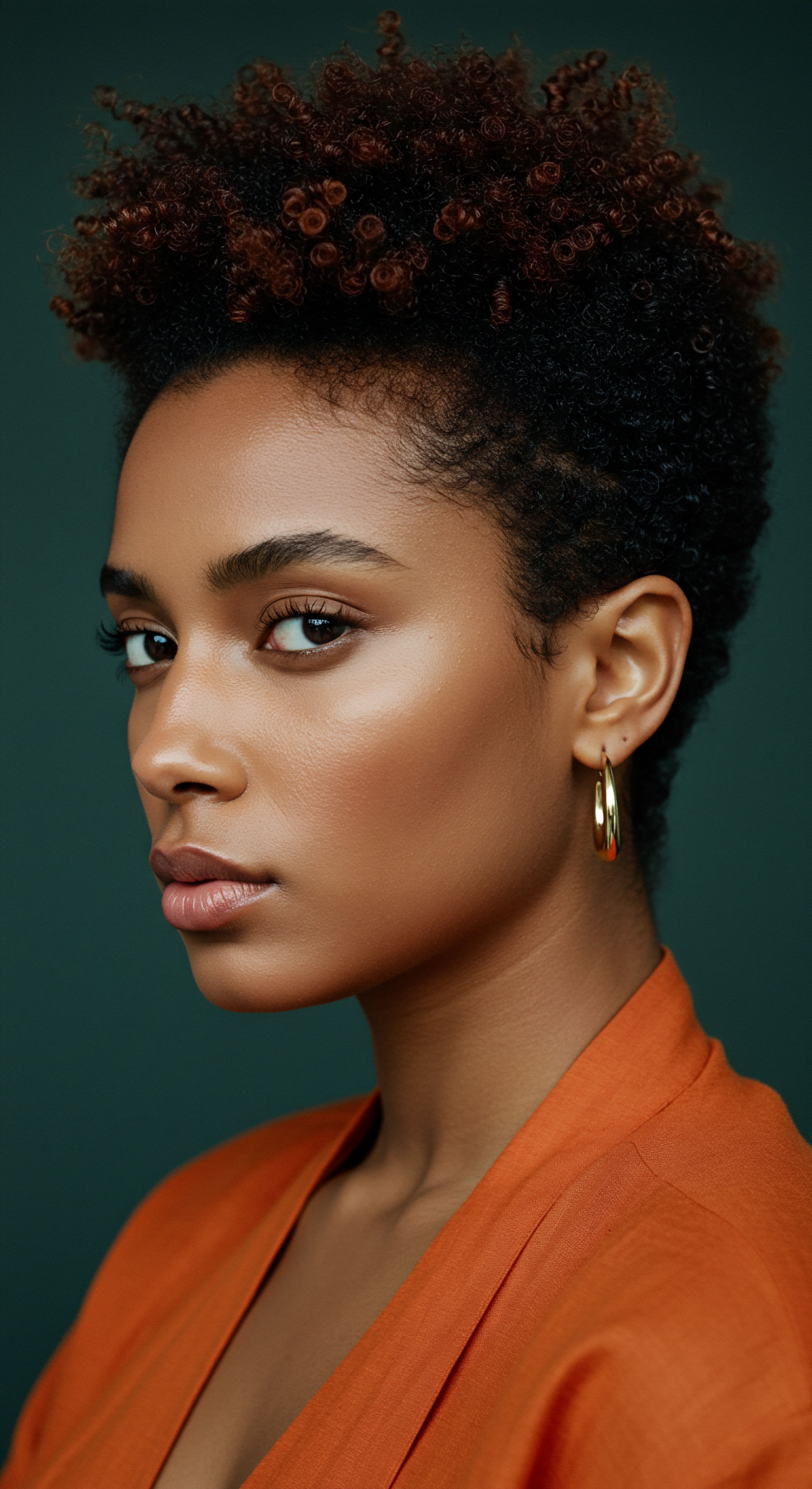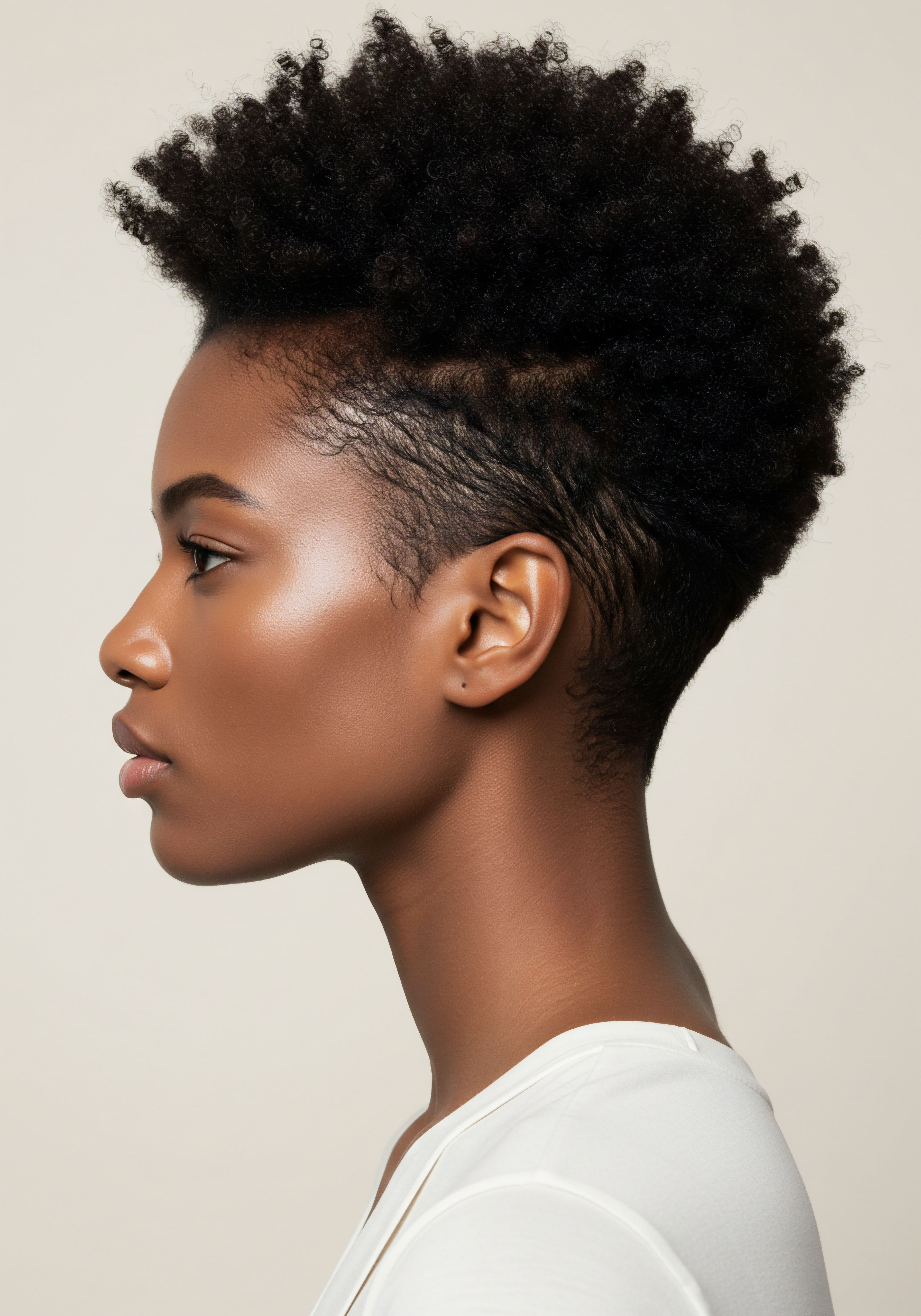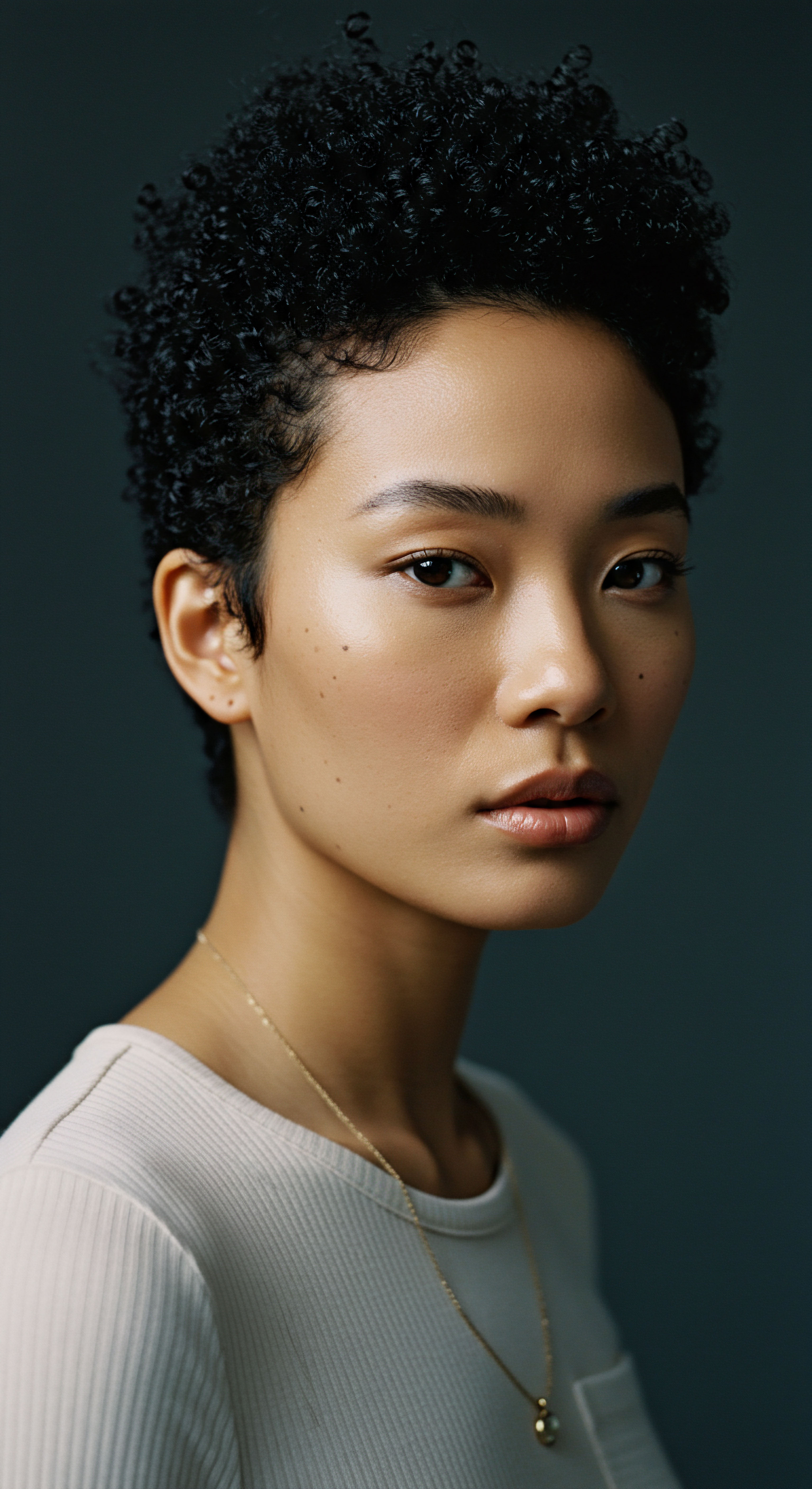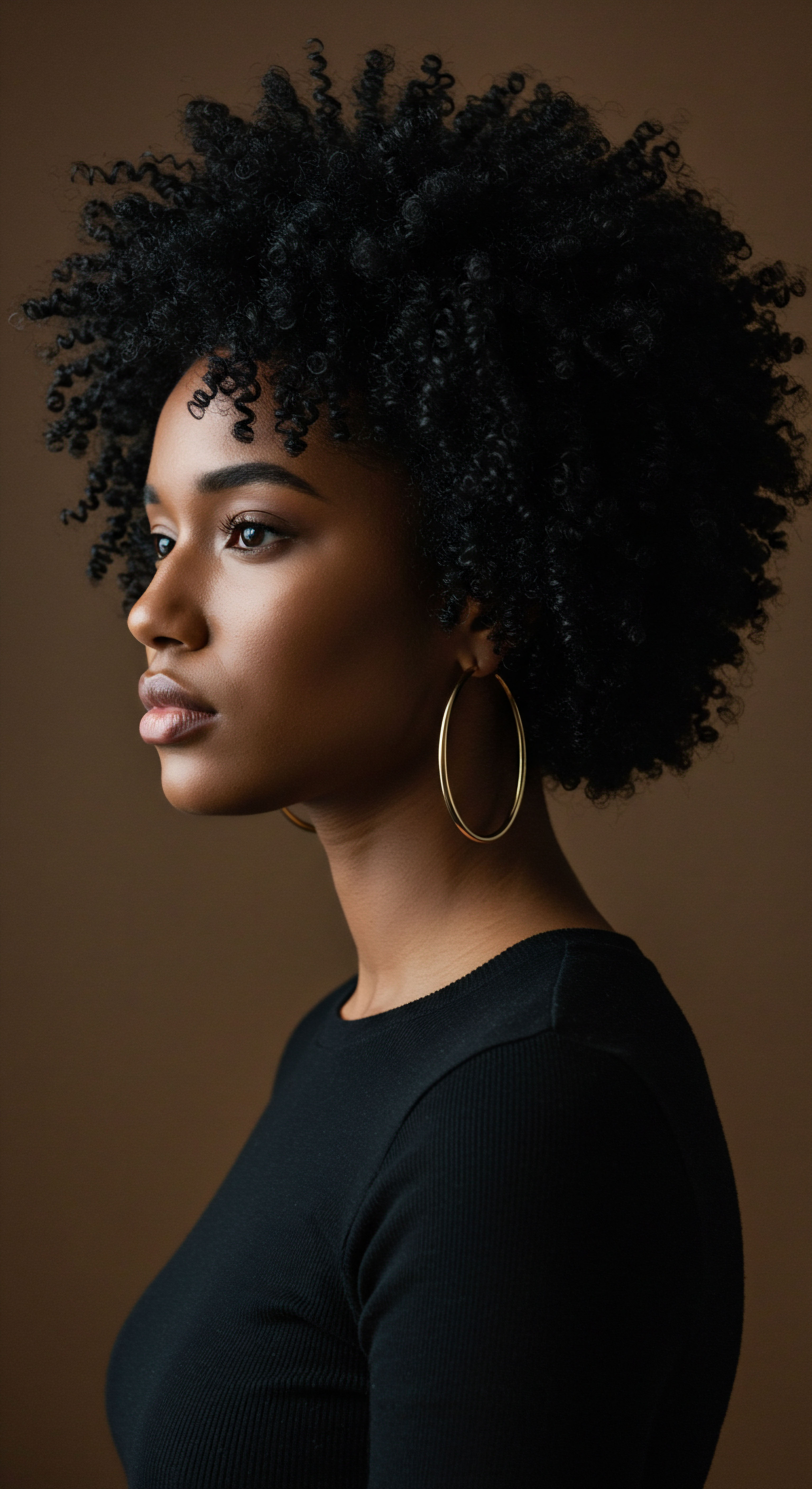
Roots
The very strands that crown us carry histories, stories whispered across generations, often shaped by forces far grander than personal preference. To truly comprehend the textured hair care choices made today, and the powerful collective voices that advocate for them, one must first look to the enduring shadow cast by historical beauty standards. These ideals, frequently rooted in Eurocentric notions of straightness and pliability, did not merely suggest a preference; they actively sculpted perceptions of worth, professionalism, and acceptability, especially for those with coily, kinky, or wavy hair.
Consider the profound impact of colonial eras, where indigenous and African hair textures were systematically devalued, often viewed as “unruly” or “primitive.” This cultural imposition was not a subtle suggestion but a forceful declaration, compelling many to alter their hair to conform to an imposed aesthetic. This historical dismissal laid a foundational layer of self-perception that still echoes, sometimes quietly, in modern anxieties about hair texture and its place in various societal spheres.

What is the Anatomy of Textured Hair?
To understand the historical pressures, one must first grasp the intrinsic qualities of textured hair itself. Unlike straight hair, which typically grows in a circular or oval cross-section, textured hair emerges from follicles that are often elliptical or flattened. This unique shape, coupled with the way the hair shaft twists and turns as it grows, creates its characteristic coils, kinks, and waves. These structural distinctions contribute to a higher number of cuticle layers and a greater propensity for dryness due to the difficulty of natural oils (sebum) traveling down the winding shaft.
- Follicle Shape ❉ The shape of the hair follicle dictates the curl pattern, with flatter follicles producing tighter curls.
- Hair Shaft Twists ❉ The helical twists along the hair shaft create the distinct coil patterns, making textured hair more prone to tangling.
- Cuticle Layers ❉ Textured hair often exhibits more open or lifted cuticle layers, contributing to its tendency for moisture loss.
This inherent dryness and fragility, a biological reality, became tragically misconstrued through the lens of dominant beauty standards. What was a natural characteristic was often labeled a flaw, demanding chemical or mechanical alteration to fit a prescribed ideal. This fundamental misunderstanding, or rather, deliberate misrepresentation, of textured hair’s biological makeup fueled a market for products designed to suppress its natural form, not to nourish it.
The legacy of historical beauty standards has profoundly shaped the contemporary landscape of textured hair care and its powerful advocacy.

How Have Historical Classifications Shaped Perceptions?
The very systems used to classify hair, even those seemingly scientific, have often been imbued with historical biases. Early anthropological attempts to categorize human populations frequently linked hair texture to racial hierarchies, with straight hair placed at the apex of a perceived evolutionary ladder. While modern trichology offers more nuanced systems like Andre Walker’s typing (1A-4C), even these can sometimes inadvertently reinforce older ideas if not approached with a deep understanding of diversity and individual variation.
The historical lexicon used to describe textured hair was frequently derogatory, employing terms that conveyed wildness, unmanageability, or lack of refinement. This language, deeply ingrained, contributed to the societal pressure to straighten or chemically alter hair. The rejection of these historical classifications, and the creation of a new, affirming vocabulary, has become a cornerstone of modern textured hair advocacy, celebrating the richness and diversity of curl patterns.
| Historical Descriptor "Unruly" or "Wild" |
| Underlying Bias Lack of control, perceived untidiness |
| Modern Understanding Natural volume, unique curl definition |
| Historical Descriptor "Coarse" or "Nappy" |
| Underlying Bias Roughness, inferiority |
| Modern Understanding Density, specific fiber characteristics |
| Historical Descriptor "Difficult to Manage" |
| Underlying Bias Requires specific, often unavailable, tools/knowledge |
| Modern Understanding Requires tailored care routines and products |
| Historical Descriptor The evolution of language reflects a shift from judgment to appreciation for textured hair. |

Ritual
Stepping from the foundational understanding of hair’s very being, we now turn our gaze to the daily practices and routines that have shaped, and continue to shape, the textured hair experience. These are the rituals, both born of necessity and now chosen with intention, that reflect a complex interplay of historical conditioning and contemporary self-determination. The journey from concealing natural texture to celebrating it has been a profound shift, redefining what constitutes “care” and “styling.”
For generations, the predominant ritual for many with textured hair involved a consistent effort to straighten it. This often meant harsh chemical relaxers, hot combs, and flat irons, tools and treatments that, while offering temporary conformity to prevailing beauty standards, frequently inflicted damage on the hair and scalp. These practices were not simply cosmetic choices; they were often seen as a prerequisite for social acceptance, educational opportunities, and professional advancement. The economic implications of this historical pressure were substantial, creating a lucrative market for straightening products that often neglected hair health.

What is the Protective Styling Encyclopedia?
In stark contrast to the historical imperative of straightening, modern textured hair care has seen a powerful resurgence of protective styling. These techniques, many with roots in ancestral practices, prioritize safeguarding the hair from environmental stressors, manipulation, and breakage. Styles like braids, twists, locs, and cornrows, once often relegated to informal settings or viewed through a lens of prejudice, are now celebrated for their aesthetic versatility and their functional benefits.
The adoption of protective styles is a conscious choice, often signaling a departure from damaging historical rituals. It speaks to a deeper understanding of textured hair’s needs for minimal manipulation and moisture retention. This shift is not merely about a change in hairstyle; it represents a reclamation of cultural heritage and a redefinition of beauty that honors natural form.

How Have Natural Styling Techniques Evolved?
The contemporary landscape of textured hair care is rich with techniques aimed at enhancing and defining natural curl patterns, a stark departure from past efforts to suppress them. Wash-and-go routines, twist-outs, braid-outs, and finger coiling are just a few examples of methods that prioritize hydration and definition. These techniques require a different set of skills and a distinct philosophy compared to straightening, emphasizing gentle handling and product selection that supports curl integrity.
The rise of the natural hair movement, particularly since the early 2000s, has been instrumental in popularizing these methods. Online communities, social media platforms, and dedicated hair care brands have democratized knowledge, making it accessible to a wider audience. This collective sharing of information has empowered countless individuals to rediscover and embrace their natural texture, turning daily styling into a ritual of self-acceptance.
The shift from hair alteration to natural texture celebration marks a profound evolution in textured hair care practices.
One striking illustration of this evolution lies in the economic sphere. A 2018 report by Mintel revealed that the Black haircare market in the U.S. saw a significant decline in sales of relaxers, dropping from $179 million in 2008 to $63 million in 2018.
This dramatic decrease, while not solely attributable to a single factor, strongly correlates with the burgeoning natural hair movement and the growing preference for products that support, rather than chemically alter, textured hair. This data point underscores a tangible, market-driven shift away from historically imposed beauty standards and towards an embrace of natural aesthetics.
The economic impact of this shift is multi-layered. As relaxer sales declined, there was a corresponding rise in demand for products specifically formulated for natural hair, including curl creams, leave-in conditioners, and gentle cleansers. This has led to a diversification of the hair care industry, with both established brands and independent, often Black-owned, businesses innovating to meet the needs of this growing consumer base. The choices consumers make at the retail level are not just about personal preference; they are a direct reflection of changing beauty ideals and the power of collective advocacy.

Relay
Our exploration now moves into the deeper currents, the cultural and systemic complexities that underpin modern textured hair choices and advocacy. This is where the historical echoes become most apparent, where societal structures and psychological impacts intersect with individual care routines. The journey of textured hair is not simply a personal one; it is a profound commentary on identity, power, and the ongoing quest for self-determination within a broader cultural landscape.
The concept of “good hair” versus “bad hair,” a insidious byproduct of historical beauty standards, has permeated communities for generations. This internalized hierarchy, often perpetuated within families and communities, speaks to the profound psychological impact of pervasive societal messaging. It fostered a subtle, yet powerful, pressure to conform, leading to feelings of inadequacy or shame for those whose hair did not meet the imposed ideal. Addressing this internalized bias is a significant aspect of contemporary advocacy, fostering self-love and acceptance from within.

How does the CROWN Act Address Historical Discrimination?
Perhaps no contemporary movement better illustrates the direct influence of historical beauty standards on modern advocacy than the CROWN Act (Creating a Respectful and Open World for Natural Hair). This legislation, which began at the state level in the United States and has seen efforts for federal adoption, prohibits discrimination based on hair texture and protective hairstyles associated with race. Its very necessity speaks volumes about the enduring impact of discriminatory practices rooted in Eurocentric beauty norms.
Historically, Black individuals, particularly women, have faced disproportionate scrutiny and punishment in schools and workplaces for wearing natural hairstyles. This often manifested as being sent home, suspended, or even denied employment or promotion because their hair was deemed “unprofessional” or “distracting.” The CROWN Act directly challenges these biases, asserting that hair texture is an inherent racial trait and that styles like braids, twists, and locs are culturally significant expressions that should not be subject to discrimination.
- Legal Protection ❉ The CROWN Act provides legal recourse against hair discrimination in workplaces and schools.
- Cultural Recognition ❉ It formally recognizes and protects the right to wear natural and protective hairstyles.
- Systemic Change ❉ The act aims to dismantle systemic biases that have historically disadvantaged individuals with textured hair.
The ongoing push for the CROWN Act across various jurisdictions highlights a critical point ❉ while personal hair care choices have shifted, the societal acceptance of those choices still requires legislative backing. It demonstrates that the influence of historical beauty standards extends beyond individual preference into matters of civil rights and economic opportunity.
The CROWN Act serves as a tangible manifestation of the ongoing struggle against hair discrimination rooted in historical beauty standards.

What is the Role of Media in Shaping Textured Hair Acceptance?
The visual landscape of media has historically played a significant, often detrimental, role in shaping perceptions of textured hair. For decades, mainstream media largely excluded or misrepresented textured hair, reinforcing the idea that straight hair was the default and desirable aesthetic. This lack of representation contributed to feelings of invisibility and reinforced the pressure to conform.
However, the modern era has seen a powerful counter-movement. Social media platforms, independent content creators, and increasingly, mainstream advertising and entertainment, are showcasing the diversity and beauty of textured hair. This increased visibility is not merely cosmetic; it contributes to a broader cultural shift, normalizing natural textures and challenging entrenched biases. When young people see diverse hair textures celebrated in popular culture, it helps to dismantle the internalized narratives of inadequacy that past beauty standards fostered.
This evolving media representation also impacts product development and care choices. As more natural hair types are visible and celebrated, there is a greater demand for specialized products and tools. This creates a positive feedback loop, where increased visibility fuels market demand, which in turn leads to more tailored and effective solutions for textured hair care. The relay of information and affirmation through media channels is a powerful force in accelerating the dismantling of historical biases.

Reflection
The journey through the historical currents that have shaped textured hair care and advocacy reveals a profound narrative of resilience and redefinition. From the subtle, often insidious, societal pressures of the past to the vibrant, empowered movements of the present, the story of textured hair is one of constant evolution. It reminds us that beauty is not a static ideal but a fluid concept, continuously reshaped by cultural shifts, scientific understanding, and the unwavering spirit of those who choose to wear their crowns in their truest form. The dialogue continues, inviting deeper understanding and wider celebration of every unique coil and kink.

References
- 1. Mintel. (2018). Black Consumers and Hair Care.
- 2. Byrd, A. (2001). Hair Story ❉ Untangling the Roots of Black Hair in America. St. Martin’s Press.
- 3. Patton, M. Q. (2015). Qualitative Research & Evaluation Methods ❉ Integrating Theory and Practice. SAGE Publications.
- 4. Hope, R. (2019). Hair, Race, and Identity ❉ An Interdisciplinary Exploration. Routledge.
- 5. Hunter, A. (2011). Black Hair ❉ A Historical Perspective. Peter Lang Publishing.
- 6. Du Bois, W. E. B. (1903). The Souls of Black Folk. A. C. McClurg & Co.
- 7. hooks, b. (1992). Black Looks ❉ Race and Representation. South End Press.
- 8. Rooks, N. M. (1996). Hair Raising ❉ Beauty, Culture, and African American Women. Rutgers University Press.